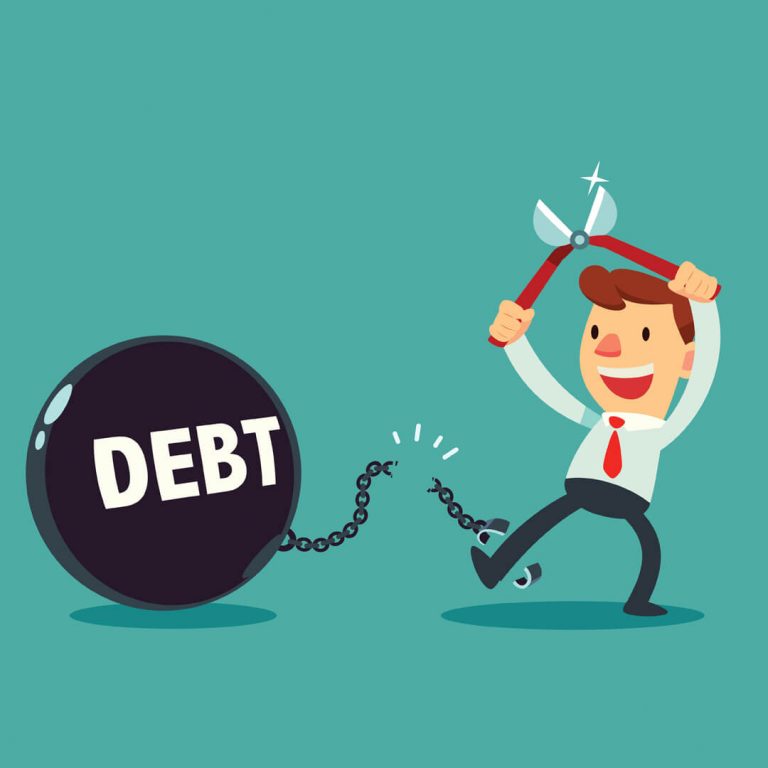Debt is the ultimate killjoy. It can destroy a budget, make long-term financial planning impossible, and shadow every purchase you make with guilt. No one wants to live with that burden. But how do you kiss your debt goodbye?
Crawling out from under the mountain won’t be easy, but if you’re ready to realign your priorities and do what it takes, you can shake off debt no matter how large.
Let’s take a look at two popular approaches for paying down debt and explore the pros and cons of each.
The Debt Snowball Method
The snowball approach to getting out of debt was popularized by financial guru Dave Ramsey. It involves focusing on paying off the smallest debt first, and then working on the next-smallest debt until they’re all paid off.
Here’s an example: Say you’ve squeezed an extra $500 out of your budget to channel toward paying down debt and you have the following debts:
- $2,500 personal loan at 9.5% interest; minimum payment $50
- $10,000 car loan at 3% interest; minimum payment $200
- $13,000 credit card debt at 18.99% interest; minimum payment $225
- $18,000 student loan at 4.5% interest; minimum payment $300
In this scenario, the snowball method would have you paying just the minimum payment on all debts except for the smallest. On that, you’d put the extra $500 you have toward quickly paying off the personal loan. Once that’s paid off, you’d take the $550 you were paying toward the personal loan and add it to the $200 you’re paying for the car loan. Now you’re paying $750 toward your car loan and you’ll be kicking it in approximately one year. Keep doing this until you’ve kissed all your debts goodbye!
Pros of the Debt Snowball Method
The most significant draw of the debt snowball method is that it works with behavior modification and not with math. The small but quick wins are excellent motivators to keep you going until you’ve worked through all debts.
It’s not just a nice theory. A study published by Harvard Business Review proved that starting a journey toward a debt-free life with the smallest debt actually does help keep the motivation going until the job is done.
Cons of the Debt Snowball Method
The primary disadvantage of the debt snowball method is its indifference toward interest rates. Paying off the smallest debt first can mean holding onto the debt with the highest interest rate the longest. This translates into paying more in overall interest, sometimes to the tune of several thousands of dollars.
Debt Avalanche Method
The Debt Avalanche Method takes the opposite approach of the Snowball Method and advocates for getting rid of the debt with the largest interest rate first and then moving on to the next-highest. This enables the debt payer to shed heavy interest rates quicker and to put more of their money toward the principal of their loans.
In the scenario above, the debt avalanche method would involve paying down the credit card debt first, followed by the personal loan, student loan and finally the car loan.
Pros of the Debt Avalanche Method
Paying off the debt with the highest interest rate first can save hundreds, and sometimes thousands, of dollars in interest. Some people also like the idea of kicking their most weighty debt sooner. Finally, in most cases, choosing the debt avalanche route will be shorter than the snowball method.
Cons of the Debt Avalanche Method
The Debt Avalanche requires self-motivation to keep the debt-payer plugging away at the plan despite seeing little progress. It’s harder to feel like you’re getting somewhere when the numbers are barely moving, but for individuals who are sincerely motivated and believe they can stick with the plan until they see results, it works.
Which Method is Right for You?
Is your chief concern finding an approach that will cost you less time and money? The Avalanche approach is the clear winner. However, factors like your personality and lifestyle play a role in determining which of these methods is the best choice for you. If you think you’ll need early motivation to keep going, the Debt Snowball method is better than not paying down your debt at all.
Before you make your decision, run your numbers through a debt-paying calculator to see how much interest you’d be paying by using each method and how long each approach will take.
There’s no reason to think you’ll be stuck with one method once you make your choice. You can always switch approaches down the line. Choose your approach and get started today!






Comments Section
Please note: Comments are not monitored for member servicing inquiries and will not be published. If you have a question or comment about a Quorum product or account, please visit quorumfcu.org to submit a query with our Member Service Team. Thank you.